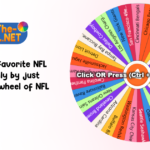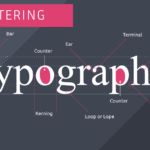Okay, so check this out—prediction markets used to feel niche. Really niche. Then something changed and my gut said, “Wait—this could scale.” Whoa! At first glance it’s just people betting on events. But there’s a deeper shift: markets turning collective belief into real-time signals, with money attached. Hmm… that money matters. Stakes focus attention. Markets punish nonsense. They reward clarity.
Here’s the thing. Traditional polls are slow and noisy. They ask people what they think. Prediction markets watch what people are willing to put capital behind. Short sentence. This difference is subtle but profound. On one hand, polls measure opinion snapshots. On the other hand, markets surface expectations that incorporate incentives and private information. On the surface it’s decentralized betting. Though actually, it’s a distributed information processor.
My first time on a platform I remember thinking: “This is messy, but honest.” There were trades, hunches, overreactions, and smart hedges. The platform itself had these tiny UX quirks that made it feel like a grassroots experiment—oh, and by the way, that slightly clunky feel gave it charm. Initially I thought markets would be gamed to death, but then I watched liquidity providers and arbitrageurs smooth prices. Initially I thought X, but then realized Y—liquidity and incentives do a lot of heavy lifting.
Decentralization changes the game. Seriously? Yes. A blockchain-backed market makes participation permissionless and transparent, which is both a blessing and a headache. Blessing: censorship resistance. Headache: regulation and abuse vectors. Something felt off about early platforms that centralized order books; they looked like Web2 reincarnations. My instinct said permissionless architectures would surface more honest pricing. They did—eventually.
How these markets actually work (in plain English)
Think of a prediction market as an options chain for real-world questions. You buy a “Yes” share if you think an event will happen. You buy “No” if you don’t. Short sentence. Price roughly equals consensus probability. If a question’s market trades at 65 cents, the market is pricing about a 65% chance of that outcome. Traders update those prices as news hits, or as new interpretations surface. Liquidity matters more than you think. Low liquidity equals noisy prices and big swings; high liquidity equals smoother, more reliable signals.
Here’s what bugs me about naive takes: they assume markets are magically right. Nope. Markets synthesize information, incentives, and noise. And sometimes they’re wrong because participants are biased, misinformed, or simply trolling. On the flip side, markets often beat pundits because money focuses attention. I’m biased, but I’ve seen market prices anticipate outcomes before mainstream coverage catches up. That part feels almost unfair—like watching a crowd out-think the experts.
Embedding these markets on-chain also brings verifiability. Trades are auditable. Settlements are transparent. That transparency helps align incentives—disputes get resolved with evidence rather than spin. However, it also raises privacy concerns. Not everyone wants their stakes exposed on a public ledger. So there’s a trade-off: transparency versus privacy, and different platforms balance it differently.
Where Polymarket fits in — and why it matters
I started using polymarket because it felt approachable. The UI made this new idea less intimidating. It lets casual users express beliefs while letting sophisticated traders move prices. Medium sentence here. The platform became a real-time barometer for topics from politics to tech. And yeah, sometimes the headline markets feel theatrical, but the aggregate information is useful.
On the technical side, decentralized designs open up composability. Liquidity pools, automated market makers, and cross-platform arbitrage make prediction markets part of the broader DeFi fabric. That means capital efficiency and new incentive structures, but it also invites complexity. Protocol risks—smart contract bugs, oracle failures, settlement disputes—are real and deserve attention. I’m not 100% sure how regulators will treat all of this, but it’s not trivial.
Regulation is a double-edged sword. Clear rules could legitimize the space and attract institutional capital. Too much enforcement could strangle innovation. On one hand, markets offer societal value—forecasting pandemics, elections, tech adoption. On the other hand, they create vectors for manipulation and financial harm. Balancing those is the policymaker challenge, and honestly, I’m curious how that plays out in the next five years.
There’s also the human side. Prediction markets teach humility. You lose money when wrong, and that sharpens analysis. They incentivize precision in language—question wording matters more than you’d expect. Ambiguous markets attract dispute; precise markets attract credible prices. This small behavioral nudge—be precise or pay for it—scales into better public discourse. Maybe that’s wishful. But maybe not.
FAQ — quick answers to common questions
Are decentralized prediction markets legal?
Depends where you are. In many jurisdictions they’re in a gray zone. Some are treated like gambling; others fall under securities or derivatives law. I’m not a lawyer, but the safe move is to consult counsel before launching or participating at scale.
Can these markets be manipulated?
Yes, especially low-liquidity markets. Manipulation is cost-based: if someone is willing to lose money to push a price, they can. But markets with ample liquidity and active arbitrage are much harder and more expensive to manipulate reliably.
Why use blockchain for this?
Transparency, composability, and censorship resistance. Blockchains allow open participation and auditable records, which builds trust in settlements. Trade-offs: transaction costs, privacy concerns, and technical attack vectors.
I’m excited and cautious. The excitement comes from watching collective intelligence get a practical upgrade—real stakes, faster signals, and programmable incentives. The caution comes from unresolved legal questions, potential for abuse, and the human tendency to overinterpret noisy data. Something to watch closely. Seriously.
Final thought: prediction markets are a lens on what people think will happen. They won’t solve everything. But they can make discourse more accountable, and in a messy world—well—that’s a win. I’ll be watching them, trading a bit, and learning a lot. You should too, if only to get a better feel for where crowds place their bets—and why.







